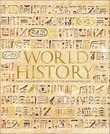
Students will watch a short set of videos and respond to questions set provided on the Aztec and the Incan Empires.
- Subject:
- World History
- Material Type:
- Lesson Plan
- Author:
- LAUREN SCHAEFER
- Date Added:
- 11/27/2019

Students will watch a short set of videos and respond to questions set provided on the Aztec and the Incan Empires.

Students will watch a short set of videos and respond to questions set provided.

Examine the US Constitution to see if it can prevent a dictatorship.

Students explore the many different ways that engineers provide natural lighting to interior spaces. They analyze various methods of daylighting by constructing model houses from foam core board and simulating the sun with a desk lamp. Teams design a daylighting system for their model houses based on their observations and calculations of the optimal use of available sunlight to their structure.

As students learn more about the manufacturing process, they use the final prototypes created in the previous activity to evaluate, design and manufacture final products. Teams work with more advanced materials and tools, such as plywood, Plexiglas, metals, epoxies, welding materials and machining tools. (Note: Conduct this activity in the context of a design project that students are working on; this activity is Step 6 in a series of six that guide students through the engineering design loop.)
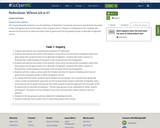
Inquiry DescriptionThis inquiry will guide students to use the definition of “federalism” to evaluate documents that illustrate the power of state (NC) government and the power of the US government in relation to immigration to NC. Students will examine the documents to determine which level of government has the greatest power to deal with immigration into NC.
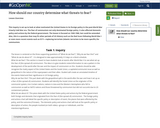
This inquiry is set up to look at what motivated the United States in its foreign policy in the post-World War II/early Cold War era. The fear of communism not only dominated foreign policy, it also affected domestic policy and actions by the federal government. The lesson is focused on 1945-1960, but could be extended. Also, this is a question that may fit other periods of US History such as the Red Scare following World War I or even more recent events such as 9/11—replacing terrorism (Islamic terrorism to be more specific) for communism.
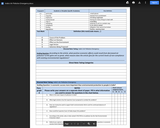
This is a close read of an article by The Staff Board of the New York Times where students will answer the question "What positive economic effects could result from decreased air pollution? If the gains are so great, what reasons does the article give for the current levels of non-compliance with existing environmental regulations?"
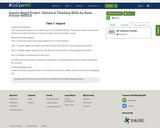
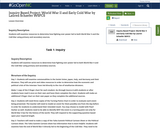
Inquiry DescriptionStudents will examine resources to determine how fighting over power led to both World War II and the Cold War using primary and secondary sources.

This inquiry based project is to be used as part of Unit 10: The World Divides- Cold War and Decolonization. This project could be used to learn the meaning of the term “cold war”, a few of the indirect conflicts of the Cold War, a few of the direct conflicts of the Cold War and some of the political and economic effects of the Cold War.
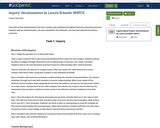
Overview of how decolonization has led to modern day problems throughout formerly colonized countries. Students will see decolonization, the neo-colonialism that followed, and how that affected the former countries.
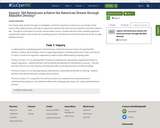
This inquiry leads students through an investigation of western expansion in America as an example of how nations often develop policies that help to expand and organize their land and how expansion sometimes leads to war. Through an examination of primary and secondary sources, students will learn how to develop arguments supported by evidence that answer the compelling question “Did Americans achieve the American Dream through Manifest Destiny?”
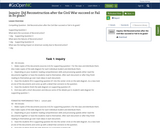
Compelling Question: Did Reconstruction after the Civil War succeed or Fail in its goals?Supporting Question I What were the successes of Reconstruction? 1 day Supporting Question II What were the failures of Reconstruction?1 day Supporting Question IIIWhat was the lasting impact on American society due to Reconstruction? 1 day
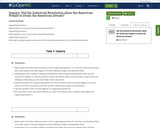
Supporting Question I What positives can be seen to the Industrial Revolution?Supporting Question II What negatives can be seen to the Industrial Revolution?Supporting Question IIIWhat we’re lasting impacts on America and the American people due to the Industrial Revolution?
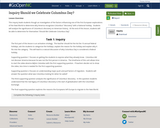
This inquiry leads students though an investigation of the factors influencing one of the first European explorations of the New World to determine why America recognizes Columbus’ “discovery” with a National holiday. Students will analyze the significance of Columbus’s discovery on American history. At the end of this lesson, students will be able to determine for themselves “Should We Celebrate Columbus Day”.

Over a three day period students will examine the important foreign policy events since Vietnam. The compelling question “Did presidents since 1975 succeed in making all Americans safer?” asks students to grapple with the challenges and achievements of six chief executives that led the nation through the unstable years after the Vietnam War. This inquiry based project would ideally be included at the beginning or at the conclusion of Unit 8: Contemporary America.

This inquiry leads students through an investigation of the political compromises over the issues of slavery in America to understand how political compromises lead to war. Through an examination of secondary sources and geography, students will learn how to arguments over the expansion of slavery contributed to growing sectionalism in order to t answer the compelling question “Was compromise a good strategy to use to prevent the Civil War?”
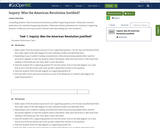
Compelling Question: Was the American Revolution justified? Supporting Question I What were colonist’s justifications for revolution?Supporting Question II What were British justifications for revolution? Supporting Question III What just and unjust actions did both sides take leading up to the revolution?
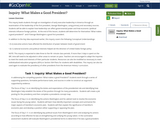
This inquiry leads students through an investigation of early executive leadership in America through an examination of the leadership of the first president, George Washington, using primary and secondary sources. Students will be able to explain how leadership can affect governmental power and how economic /political interests influence foreign policies. At the end of this lesson, students will determine for themselves “What makes a good president?” and if George Washington a good first president.In addition to the Key Idea expressed earlier, this inquiry covers the following Conceptual Understandings:• (5.2) executive actions have affected the distribution of power between levels of government• (6.1) national economic and political interests helped set the direction of United States foreign policyNOTE: This inquiry is expected to take three to five 90- minute class periods. If more than 3 days is spent on the IBP, time will need to be adjusted in other areas to remain on pace. Teachers are encouraged to adapt the inquiries to meet the needs and interests of their particular students. Resources can also be modified as necessary to meet individualized education programs (IEPs) or Section 504 Plans for students with disabilities. This inquiry can also be used again to evaluate the presidency of other presidents from the American History I curriculum.